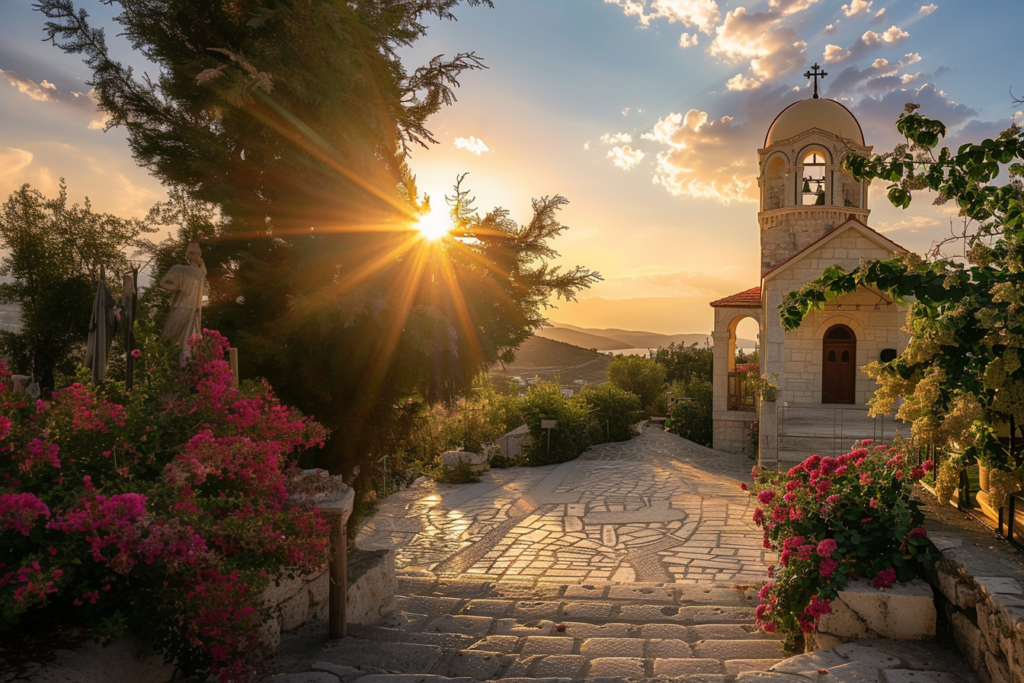Catholic Pilgrimage of Saint Paul in Greece
8 Days / 7 Nights

Why You’ll Love This Pilgrimage
Emotional & Spiritual Enrichment
Worry-Free Travel
Senior-Friendly Pace
Community & Fellowship
Trusted Experience
Furniture Assembly
Pilgrimage Itinerary at a Glance
Over eight inspiring days, you’ll travel the route of St. Paul across Greece – from northern port cities and ancient Roman ruins to the biblical heart of Athens and Corinth.

Day 1 – Welcome to Athens
Arrive at Athens International Airport, where our friendly team greets you with a warm Greek “Kalimera!” A private coach whisks you to your centrally located hotel. Settle in, relax, and perhaps enjoy a gentle stroll around the neighborhood to soak up the city’s ancient atmosphere. In the evening we gather for a welcome dinner and a short orientation prayer, asking God’s blessing on the days ahead. Overnight in Athens—rest well for tomorrow’s adventure!
Day 2 – Athens Highlights · Ancient Corinth · Cenchrea
After breakfast, explore the Acropolis, Parthenon, and Mars Hill, where St Paul preached to the Athenians (Acts 17). Mid-day we travel along the coast to Ancient Corinth—walk the Agora, Temple of Apollo, and the Bema where Paul was tried (Acts 18). A brief stop in Cenchrea, site of Paul’s departure port, deepens our understanding of his second mission. Evening return to Athens for Mass, fellowship dinner, and overnight stay.
Day 3 – Delphi Oracle · Monastery of Hosios Loukas · Kalambaka
Depart Athens for Delphi, the famed oracle of antiquity. Explore the Sanctuary of Apollo, museum treasures like the Bronze Charioteer, and the inscription naming Gallio—anchoring Paul’s timeline (Acts 18:12-17). Nearby, visit UNESCO-listed Hosios Loukas Monastery, a masterpiece of Byzantine art and mosaics. Continue north through scenic mountains to Kalambaka, gateway to Meteora. Dinner and overnight beneath towering rock spires.
Day 4 – Meteora Monasteries · Veria · Vergina · Thessaloniki
This morning admire the sky-high Meteora monasteries, perched on giant pillars of stone—icons, frescoes, and breathtaking vistas await. Journey on to Veria (Berea), where Paul encountered the “noble” Jews (Acts 17:10-12); pause at the mosaic-adorned preaching monument. Next, tour Vergina’s Royal Tombs, resting place of Philip II, father of Alexander the Great. Arrive in vibrant Thessaloniki for dinner and overnight by the Aegean Sea.
Day 5 – Thessaloniki Faith Trail
Discover Thessaloniki, city of Paul’s heartfelt epistles. Visit the Basilica of St Demetrius, Church of Hagia Sophia, and the Rotunda of St George. See Panagia Chalkeon, Prophet Elias Church, the White Tower, and Byzantine walls that once guarded the faithful. Conclude at hilltop Vlatadon Monastery for panoramic views and quiet prayer. Afternoon free for seaside promenade or souvenir shopping. Evening Mass at the Catholic Church of the Immaculate Conception, dinner, and overnight stay.
Day 6 – Philippi Baptism Site · Kavala Harbor
Drive east to Philippi, where Paul preached his first European sermon and baptized Lydia beside a tranquil stream (Acts 16). Explore the forum, theater, and ruins of the prison that could not restrain the Gospel. Continue to coastal Kavala (Neapolis), Paul’s landing point in Europe—admire the Roman aqueduct and acropolis remains. Share reflections over dinner and rest overnight in Kavala, lulled by the sound of the sea.
Day 7 – Athens Sacred Walk
Early flight back to Athens, then a leisurely walking pilgrimage through historic churches. Celebrate Mass at the Cathedral of St Dionysius the Areopagite (subject to schedule). Visit the 11th-century Russian Church, lively Monastiraki Square and Pantanassa, and the iconic Kapnikarea Church set amid bustling Ermou Street. Each stop offers moments of prayer and admiration for Byzantine art and stained glass. Enjoy a festive farewell dinner and final overnight in Athens.
Day 8 – Farewell & Departure
After breakfast, bid “efharisto” to Greece. Our team arranges your smooth transfer to Athens Airport for onward flights. Carry home renewed faith, cherished friendships, and unforgettable memories of walking in Saint Paul’s footsteps. Safe travels and God bless—until we meet again!
Spiritual Highlights of the Journey
Philippi – Birth of Christianity in Europe
Ancient Corinth – Walking in Paul’s Footsteps
Meteora Monasteries – Faith on the High Rocks
No hidden fees
What’s Included
We take care of all the essential details so you can focus on your spiritual journey. Your pilgrimage package includes:
- 7 Nights accommodation at comfortable hotels hand-picked for quality, safety, and convenient location.
- Daily breakfast and dinner are included, often featuring delicious Greek and Mediterranean cuisine.
- Expert Guides & Tour Manager: An English-speaking professional guide will accompany you to all sites.
- All admission tickets to historical sites, museums, and churches on the itinerary are included.
- Group transfers between airport and hotel are included at the start and end of the tour.

Get Excited to move
The process is easy!
1
Tell us exactly what you need
2
We'll plan the perfect move for you
Our happy customers
We’ve helped thousands of people move

Codey Joyner
UrbanAcres, LLC
“My move was way less stressful than expected! Movely packed everything, stored it for a week, and moved it all to my new home just as promised!”

Eren Hill
H&H Legal Partners
“Movely provided a very professional service when we moved offices last month. They were easy to work with and moved everything on time.”

Emanuel Sadler
SavvyMarket
Best experience ever! I desperately needed a mover to help with a last minute relocation, and Movely was so helpful in making it a seamless process!”
Ready to move? Get a quote now!
© 2025 Movely. All Rights Reserved.
